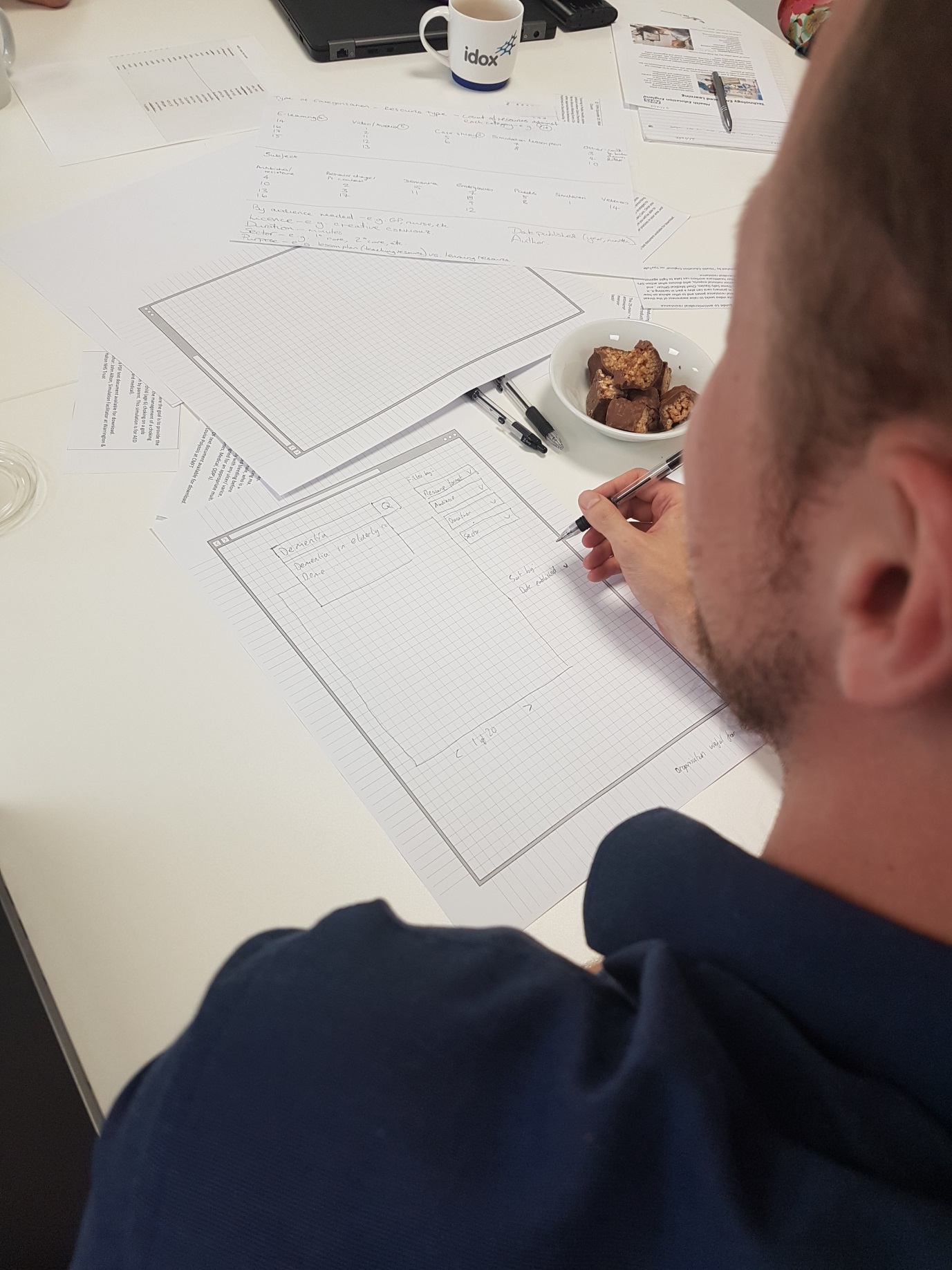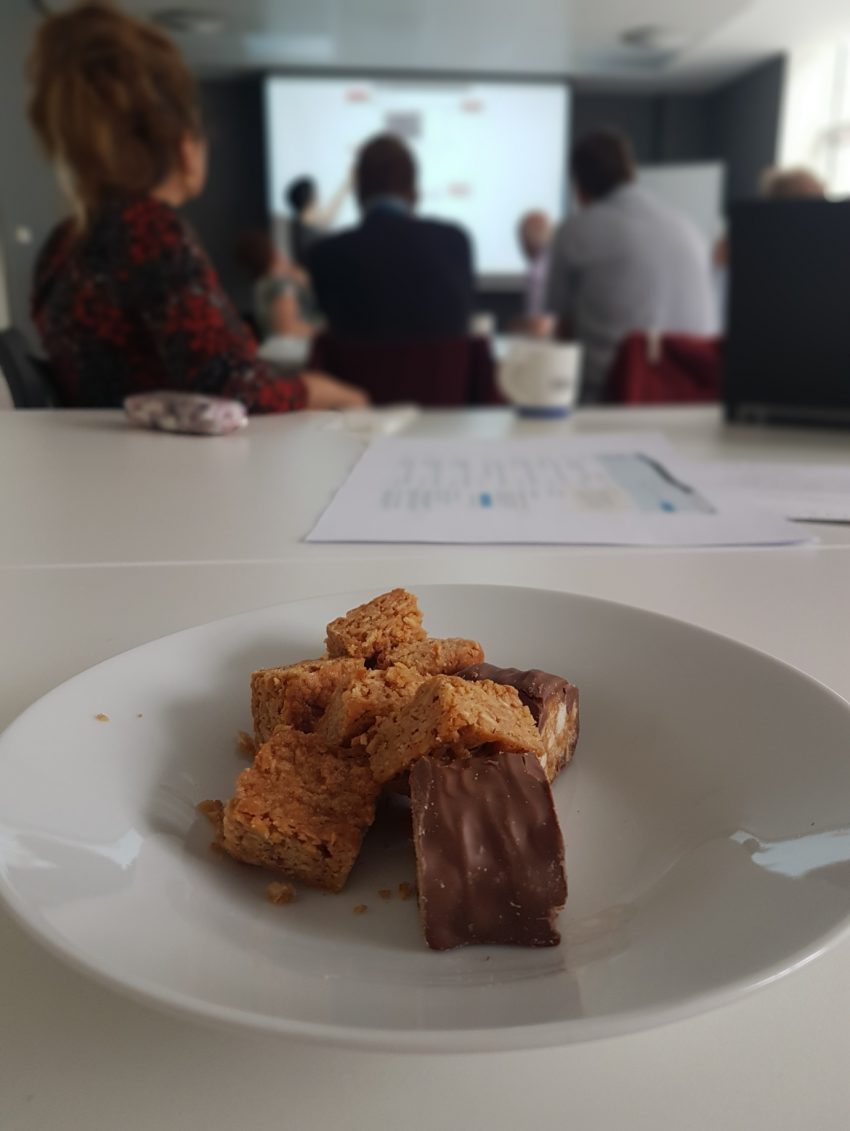This is the third in our series of blog posts on the way we have tested our assumptions around a national learning solution for health and care employees.
We have been holding a series of ‘ideathons’ with health and care colleagues where we have presented ideas and concepts and got users to provide feedback on their preferred solutions.
Volunteers from around the country joined our session in London to take part, representing community and mental health, acute and ambulance services.
Activity 1 – Opportunities to collaborate
In the first exercise, we explored situations where people might be likely to collaborate. Participants looked at a range of scenarios and assessed them for how likely they were and if they were likely to elicit a response. There was some great discussion particularly around how quality of resources should be assessed, how to make resources meaningful and how Trust policies and governance on sharing should be handled.

Don’t underestimate the power of snacks! An important part of any ideation is to keep the audience motivated and snacks are a means of helping people to maintain focus and encourage participation!

Activity 2 – Tools for collaboration
In the second exercise, individuals were asked which tools they would use to collaborate. Do we need to develop a hybrid based on multiple existing products and services or recreate one of the existing collaboration systems? The discussion focused on ways individuals ask questions and how they get answers by examining existing websites including: Stack exchange, Quora, Monzo, Yammer, Penflip and Trello.
It is, however, important to recognise some of the barriers to accessing third-party sites as well. For example, existing groups may exist on Facebook but could be blocked by ICT policies in individual Trusts. Our Barriers project is beginning to explore some of these challenges and how to address them, in parallel to this work.
Lots of websites which enable collaboration were explored, highlighting which work well and which work less well.

Activity 3 – Personal profiles
Many websites including BBC, Amazon, the Royal College of Nursing and Facebook, have personalised pages and information. In this activity, our volunteers were asked to consider how a personal homepage and profile page might look.
Participants sketched their ideal homepage with the information they might need and want when visiting the site. Examples included new items added since the last visit, notifications and alerts and personalised recommendations.

Activity 4 – Related content
How do individuals find the content that is relevant to them or related to the subjects they are interested in? In this exercise, participants explored their preferred way of finding related content on a system.
The participants liked the ability to see related content but also wanted to be able to filter it further. Participants also liked it when the content was filtered by profession showing information that their peers were also interested in.

Activity 5 – Categorising content
Key to the success of any solution is the ability of users to find content. Categories are one such way of classifying and identifying information.
In this final exercise, participants were asked to categorise a wide range of learning objects and to design a search system that worked for them.
The card sort identified some natural groupings and categories based on type of resource, care setting and subject.

